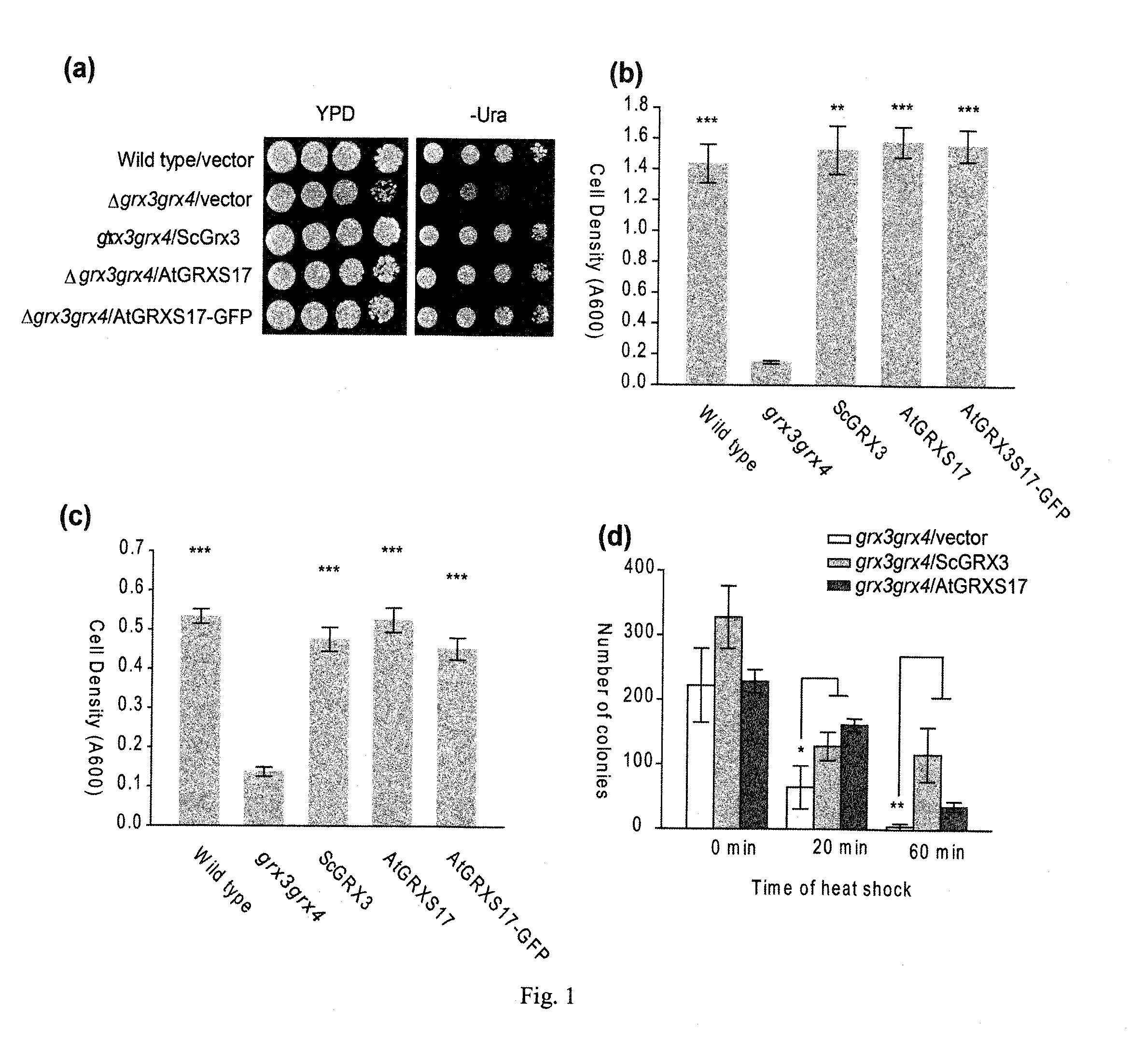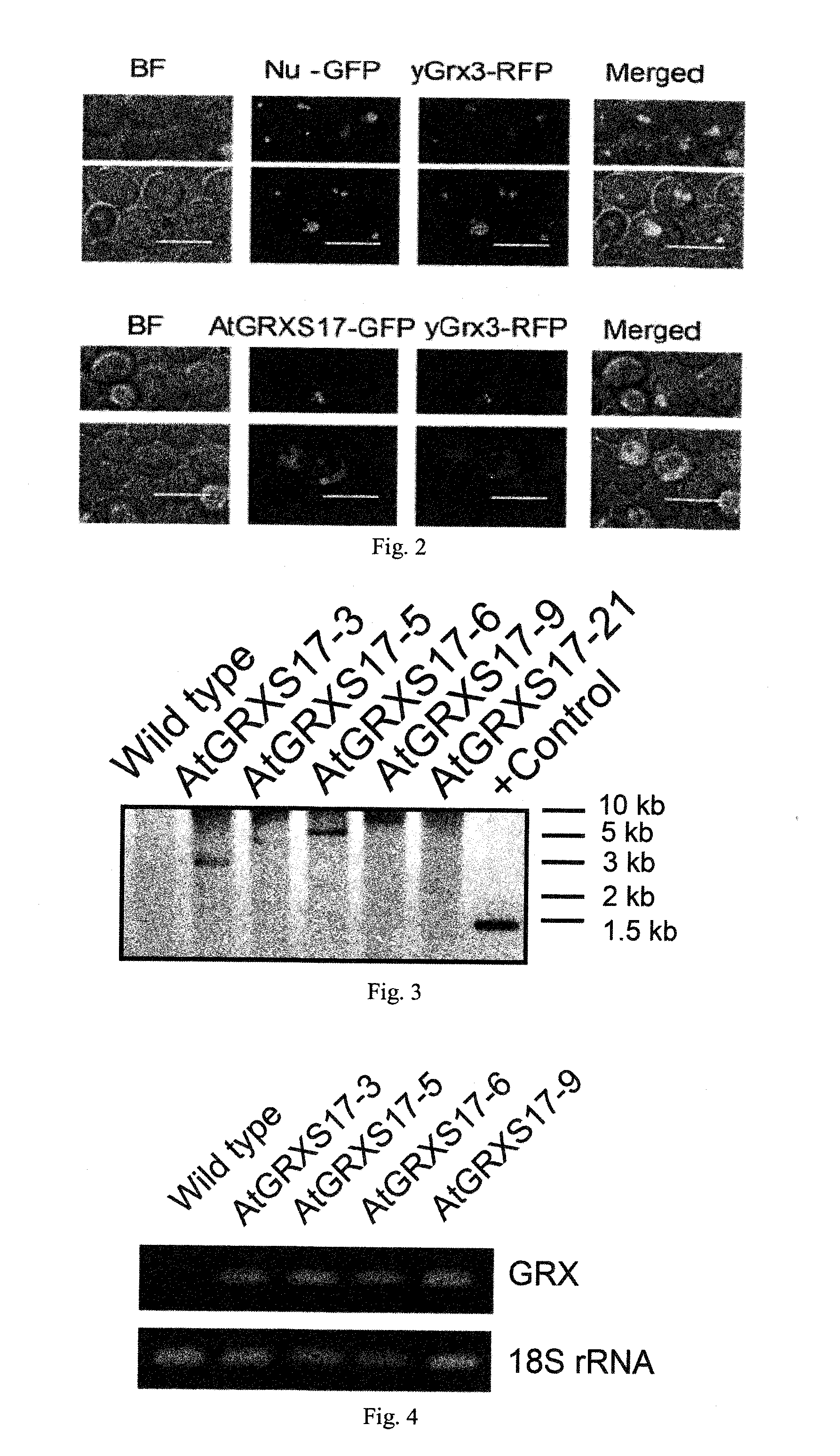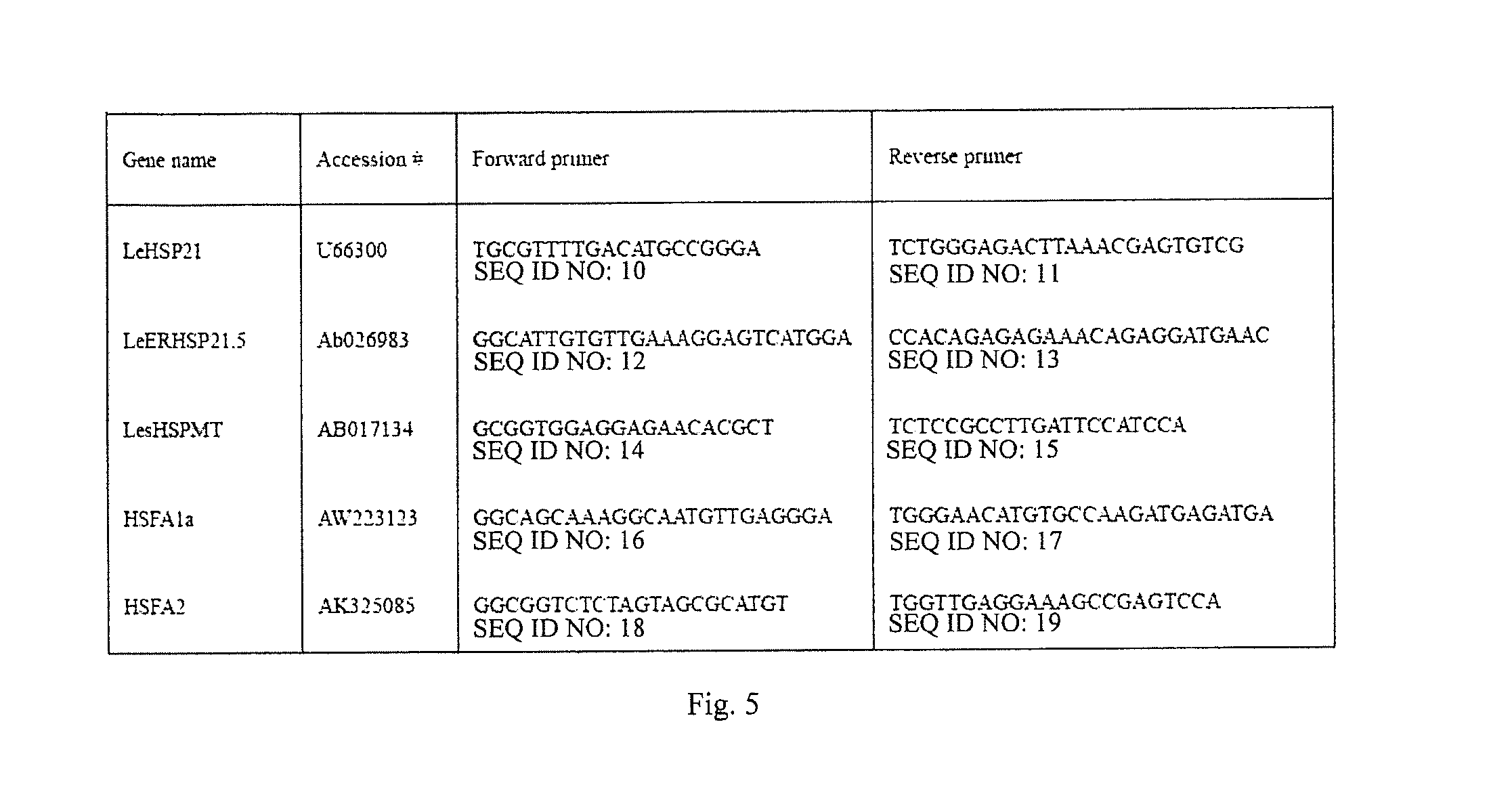Plants with enhanced tolerance to multiple abiotic stresses
- Summary
- Abstract
- Description
- Claims
- Application Information
AI Technical Summary
Benefits of technology
Problems solved by technology
Method used
Image
Examples
example 1
Protective Role of AtGRXS17 in Oxidative and Heat Stress Responses in Yeast
[0087]AtGRXS17 has a conserved Trx-HD and three tandem Grx-HDs, which are similar to yeast and mammalian monothiol Grxs, while yeast ScGrx3 / ScGrx4 have one Grx-HD and a mammalian Grx3 has two repeated Grx-HDs at their C-termini. In yeast, ScGrx3 or ScGrx4 deletions do not affect cell growth; however, deletion of both ScGrx3 and ScGrx4 significantly reduce cell growth in either nutrient rich medium (YPD) or minimal medium (FIG. 1A). This impaired growth could be rescued by over-expression of either ScGrx3 or ScGrx4 (FIG. 1A). In order to examine if AtGRXS17 could complement yeast Grx3 / Grx4 function in grx3grx4 double-mutant cells, AtGRXS17 and AtGRXS17-GFP (fusion protein with C-terminal green fluorescent protein) were expressed in the double mutant strain, respectively. Both AtGRXS17 and AtGRXS17-GFP could restore mutant cell growth (FIG. 1A).
[0088]Yeast Grx3 and Grx4 are required for cell survival under oxid...
example 2
Response and Adaptation to Heat Stress in AtGRXS17-Expressing Tomato
[0092]Generation of AtGRXS17-Expressing Tomato Plants.
[0093]To test whether AtGRXS17 may be used to improve thermotolerance of crops, we introduced a construct containing AtGRXS17 driven by the cauliflower mosaic virus (CaMV) 35S promoter into tomato (Lycopersicon esculentum cv. Rubion). Seeds of tomato Lycopersicon esculentum (cv. Rubion) were surface sterilized and germinated on the Murashige and Skoog (A Revised Medium for Rapid Growth and Bio Assays with Tobacco Tissue Cultures. Physiol. Plantarum 15, 473-497 (1962)) inorganic salt medium. Tomato transformation was performed via Agrobacterium-mediated transformation method using cotyledon and hypocotyls explants as previously described (Park et al. Efficient and genotype-independent Agrobacterium—mediated tomato transformation. J. Plant Physiol. 160, 1253-1257 (2003)). Agrobacterium tumefaciens LBA 4404 was used for generating stable transgenic plants. The plasm...
example 3
Response and Adaptation to Heat Stress in AtGRXS17-Expressing Rice
[0114]In this experiment, rice (Oryza sativa L. var. japonica) cv. Nipponbare was used for producing transgenic rice with AtGRXS17 driven by the CaMV 35S promoter. Rice transgenic lines were generated via Agrobacterium-mediated transformation using mature seed-derived callus as previously established in the Park laboratory (Park et al., 2000; Park et al., 2001). Calli derived from mature seed on MSD medium with Murashige and Skoog (1962) inorganic salts, 100 mg / liter myo-inocitol, 0.5 mg / liter nicotinic acid, 0.5 mg / liter pyridoxin, 0.1 mg / liter thiamine HCl, 1.0 mg / liter 2,4-D, 30 g / liter sucrose, and 0.8% (w / v) agar at pH 5.7 was cocultivated with A. tumefaciens (LBA4404) on the MSD medium at pH 5.2. The binary vector plasmid (pVKH18En6, gifted from John Runion's lab) with 35S::AtGRXS17 was used. After 2 days co-cultivation, calli were transferred to the MSD medium covered with sterile filter paper for 3 more days. ...
PUM
| Property | Measurement | Unit |
|---|---|---|
| Fraction | aaaaa | aaaaa |
| Fraction | aaaaa | aaaaa |
| Salinity | aaaaa | aaaaa |
Abstract
Description
Claims
Application Information
 Login to View More
Login to View More - R&D
- Intellectual Property
- Life Sciences
- Materials
- Tech Scout
- Unparalleled Data Quality
- Higher Quality Content
- 60% Fewer Hallucinations
Browse by: Latest US Patents, China's latest patents, Technical Efficacy Thesaurus, Application Domain, Technology Topic, Popular Technical Reports.
© 2025 PatSnap. All rights reserved.Legal|Privacy policy|Modern Slavery Act Transparency Statement|Sitemap|About US| Contact US: help@patsnap.com



